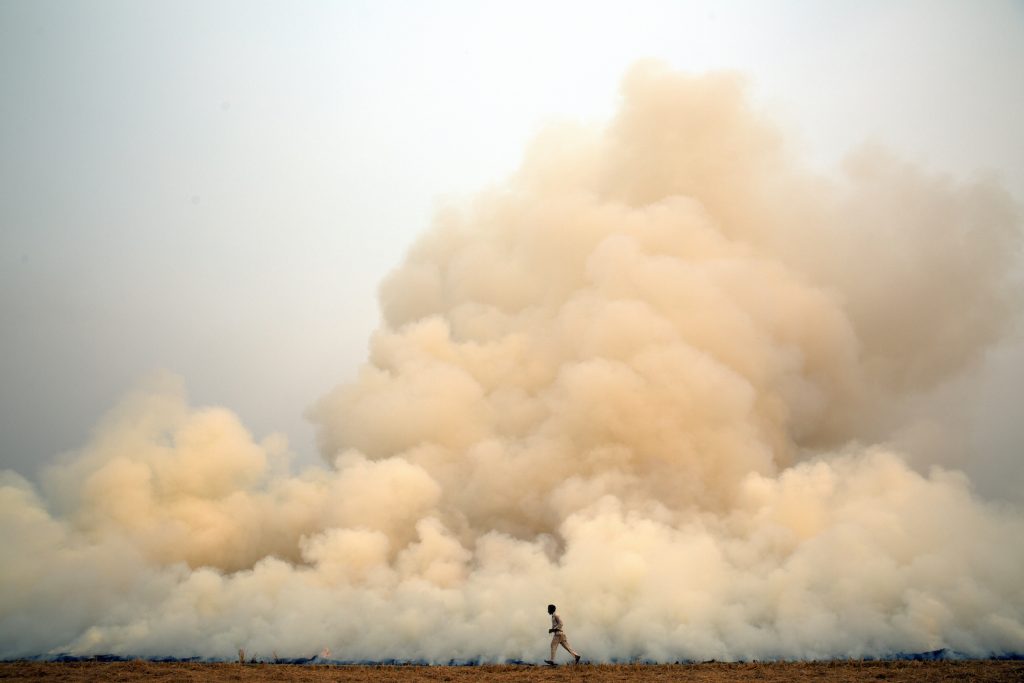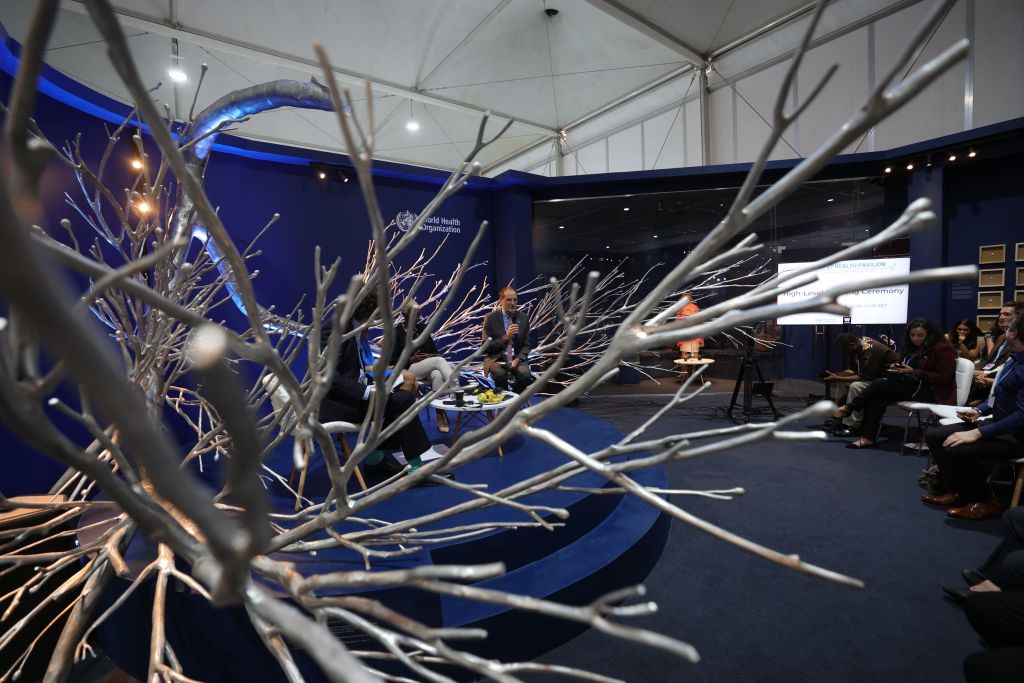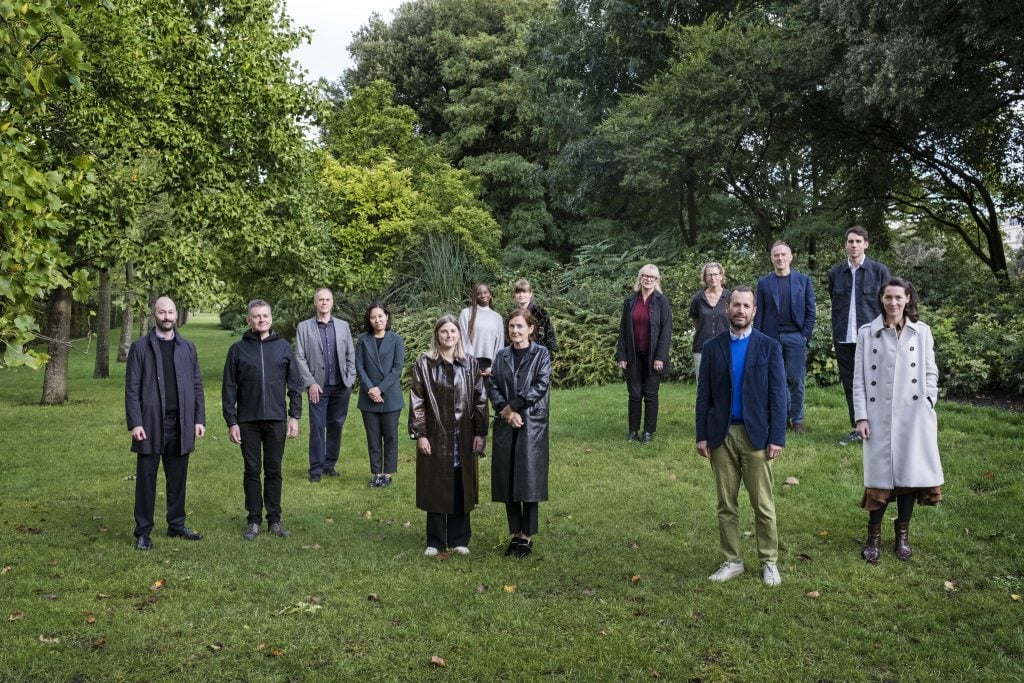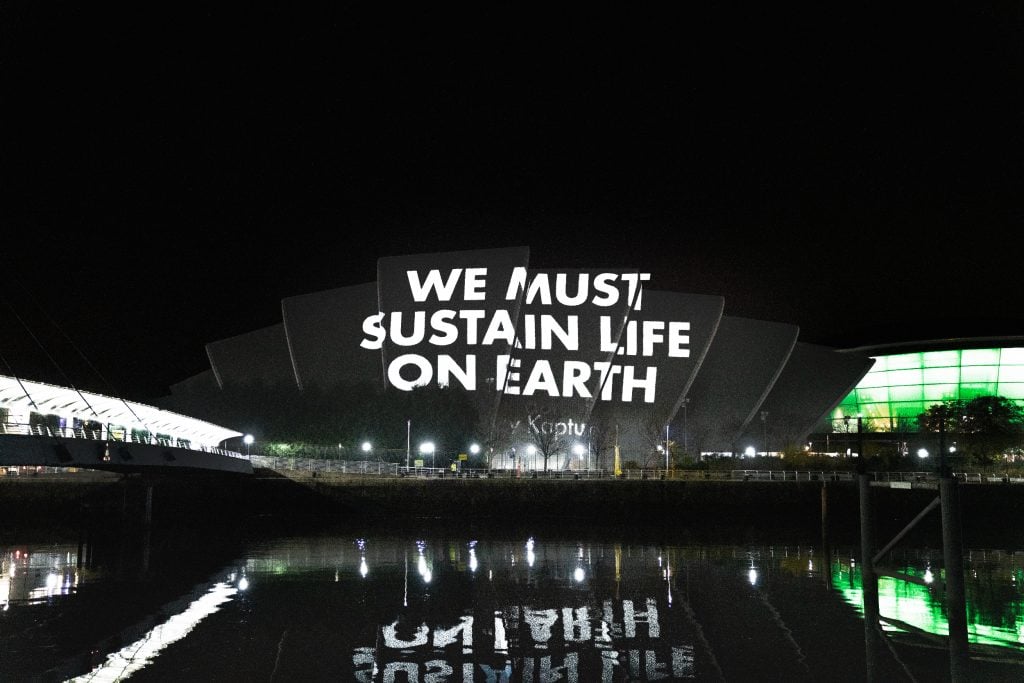Op-Ed
COP27 Brought Forward Key Lessons for the Art World. Here’s How It Can Step Up and Get Involved
There are some urgent takeaways from the climate conference that those in the art industry should know.

There are some urgent takeaways from the climate conference that those in the art industry should know.

Isla Angus

Isla Angus is head of Arts, Music & Culture Partnerships for ClientEarth, an environmental law charity, with offices in London, Brussels, Warsaw, Berlin, Beijing, Madrid and Los Angeles. They are supported by a network of people in the creative industries including White Cube, Thomas Dane Gallery, Hauser & Wirth and Frieze. Angus is also a trustee of the Gallery Climate Coalition.
The climate change conference COP27 has drawn to a close. World leaders, campaigners, NGOs, and fossil fuel lobbyists have finally made their way out of Egypt’s Sharm El Sheikh after two weeks of intensive talks, leaving us with two opposing protagonists: progress and delay.
Progress was made when “loss and damage” funding was finally agreed for vulnerable countries hit hard by climate disasters. Progress was cheered on by the sheer drive and energy of youth activists, Indigenous Peoples, NGOs, Small Island Developing States, and other countries who are pushing for urgent action.
Delay came in the form of fossil fuel lobbies, corporate bodies, and countries that all resisted change to make short term gains. Fossil fuels are the largest contributor to climate change. Simply put, if we continue to burn fossil fuels we will not be able to limit rising temperatures to 1.5 degrees Celsius. COP27 failed to deliver the end of fossil fuels.

Bodies Joined by a Molecule of Air by Invisible Flock arts studio and Jon Bausor. Photo by Fayez Nureldine/AFP via Getty Images.
This push-and-pull seen at COP27 is a reflection of the inner conflict being played out in many of us—those of us not yet directly affected by the worst climate disasters. We may want to champion and bring about progress, but the allure of delaying leads us to minimize the problem. On which side society, including the art world, aligns itself will be the deciding factor.
The western art world is often criticized for living in a particular bubble; of being too rich and too self-interested. This might explain why museums have lately been targeted by climate activists. However, within the art sector there are many steering their resources towards organizations such as Art To Acres, Earthjustice, Friends of the Earth or indeed ClientEarth. These are the organizations bringing about structural change. By partnering with the arts they can also signpost change within a culture. Law changes the rules; Art changes minds.
At ClientEarth, we believe the law is the best way to change the structures we operate in and empower people to protect their environment. For example, earlier this year, ClientEarth supported a group of eight Torres Strait Islanders—a strait between Australia and the Melanesian island of New Guinea—in the first-ever legal action brought by climate-vulnerable inhabitants of low-lying islands against a nation state. We won.
People should not have to take legal action to force their leaders to act but are often left with no other option. The case this year made international legal history: The U.N.’s Human Rights Committee agreed that the Australian Government had breached its human rights obligations to the Torres Strait Islanders, through inaction on climate change. This is precedent-setting, because it is the first time an international tribunal has found that a country has violated human rights law through inadequate climate policy; the first time a nation state has been found responsible for their greenhouse gas emissions under international human rights law; and the first time that Indigenous Peoples’ right to culture has been found to be at risk from climate impacts. It opens the door for other groups, other claimants, and other NGOs to bring similar cases and equalize power.

The founding members of the Gallery Climate Coalition. Courtesy GCC.
A year ago, Victoria Siddall, at that time director of Frieze art fairs, and dealer Thomas Dane launched an auction series with GCC and the support of Christie’s called Artists For ClientEarth. Selling work donated by artists Cecily Brown, Rashid Johnson, Xie Nanxing, Antony Gormley, Beatriz Milhazes, and their galleries. It was ClientEarth’s biggest single funder in 2021: Over £5.5 million ($6.6 million) to date has been raised, a number that has a measurable impact on ClientEarth’s capacity to scale up our work.
Donations like this directly impact our ability to take on cases that matter the most. It also helps the other things we do: devise the best ways to use law to hold governments and businesses to account, from challenging pollution permits of coal plants to bringing cases before the U.N. We have helped governments to write environmental laws and regulators to enforce them. We have saved Europe’s oldest forest from destruction and smoothed the way for environmental lawsuits in China. Our climate finance team is doing unparalleled work in cutting the financial flows to fossil fuels, to allow space and investment in the energy market for renewables.
As we reflect on this annual conference of COP27, and on how progress and delay were in the balance, I want to emphasize that there is much to cheer on beyond COP27. Leading art institutions like Tate in London, Guggenheim Bilbao, and MOCA in LA have worked hard to embed sustainability in their operations and to share their findings with others in their sector. Tate, for example, is already close to meeting its 2030 carbon reduction targets. By 2030, it is likely to have comfortably overachieved. It is hoped that other museums and art organizations follow their superb example.

Jenny Holzer, HURT EARTH, (2021). Text: Marcy Kaptur, “Climate Crisis,” U.S. Congressional hearing, June 16, 2021. © 2021 Jenny Holzer, ARS. Photo: Lee Pretious. Animation: Seth Brau.
The spirit of sharing is alive and well in the commercial art sector, too. Partners for Arts Climate Targets (PACT) is an international coalition of organizations within the visual arts who have agreed to work together to bring the whole sector into collective climate action. To work together to make year-on-year reductions to their greenhouse gas emissions; to reduce waste; share knowledge and resources and put intersectional environmentalism at the core of their operations.
Within PACT are Galleries Commit, Artists Commit, Art for Acres, Art to Zero, Art & Climate Action, Ki Culture and the Gallery Climate Coalition (GCC). These organizations are leading lights, as are the galleries and individuals behind them. From the highly visible art world, it showcases to other industries what can be possible in the move to net zero carbon. As more members of the arts sector join their colleagues on these initiatives, they are strengthened, and the transition away from fossil fuels is made easier for all.
As COP27 closed, Kathy Jetn̄il-Kijiner, the poet and climate envoy for the Marshall Islands, said: “I wish we had got fossil fuel phase-out. But we’ve shown with the loss and damage fund that we can do the impossible. So we know we can come back [to COP] next year and get rid of fossil fuels once and for all.”
The 2015 Paris Agreement at COP21 was a landmark global response to combat climate change, but many countries and companies are still not doing enough. Consider joining a community like GCC, or supporting an organization like any of those listed above. These are being run by your colleagues—but they cannot do it alone.